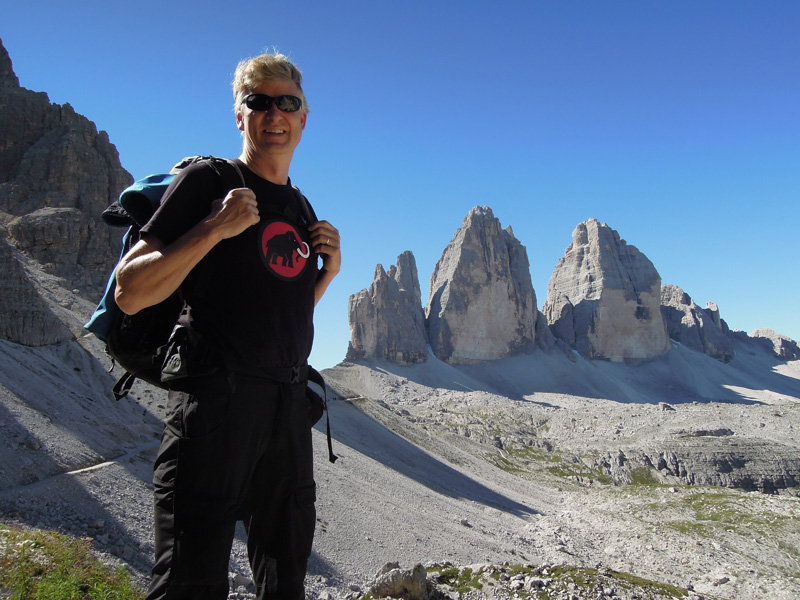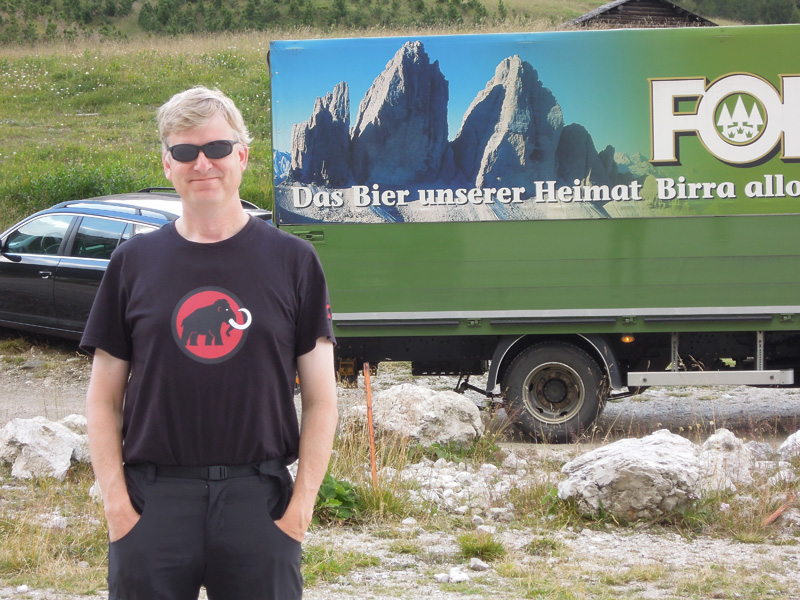Wil van der Aalst - Research and Mountaineering#
I worked on a wide range of topics including workflow management, process mining, simulation, Petri nets, business process management, process modeling, and process analysis. This resulted not only in landmark publications but also in software products and true impact in industry. I would like to mention three areas of research and interleave them with my other passion: mountains.
Modeling and analysis of workflow processes #
I was the first person that used Petri nets to formalize workflow concepts in a systematic manner. Petri nets are the oldest, most established, model of concurrency. Before my work, Petri-net researchers were mostly focusing on theory and technical applications with little consideration for applications in process-aware information systems. I introduced the so-called WorkFlow nets (WF-nets) and a correctness criterion called soundness. These notions are supported by our tools and have been widely adopted by the academic community. Increasingly these techniques are used in all kinds of commercial software products (BPM|one, WebSphere, etc.). We exposed fundamental errors in various real-life process models, e.g., with my colleagues I showed that more than 20 percent of the 600 process models in SAP's well-known reference model contain errors. Today, many researchers are working on variants of soundness and related analysis techniques. In fact, the papers on WF-nets are among the most cited papers, both in the Petri net community and the workflow community.
Workflow patterns#
Together with Arthur ter Hofstede, I initiated the Workflow Patterns initiative. Together with Arthur and Nick Russell we documented recurring patterns when modeling workflow processes. These patterns are language/tool independent and their definition substantially increased the maturity of this research domain. In the last decade hundreds of patterns have been collected and these are distributed via the website http://www.workflowpatterns.com . This website was set up by me and has been the most visited website in the workflow area for many years. On a typical working day the site is visited by more than 500 unique visitors, thus illustrating the interest in the workflow patterns. Our work on patterns has had an incredible impact on software vendors and standardization efforts. The Workflow Patterns initiative also triggered the development of the open-source workflow management system YAWL. The goal of YAWL is to provide a workflow system that directly supports much more patterns than today's commercial workflow management systems. The YAWL system is one of the most prominent open-source workflow management systems (about 120,000 downloads) and has been applied in several commercial settings.
. This website was set up by me and has been the most visited website in the workflow area for many years. On a typical working day the site is visited by more than 500 unique visitors, thus illustrating the interest in the workflow patterns. Our work on patterns has had an incredible impact on software vendors and standardization efforts. The Workflow Patterns initiative also triggered the development of the open-source workflow management system YAWL. The goal of YAWL is to provide a workflow system that directly supports much more patterns than today's commercial workflow management systems. The YAWL system is one of the most prominent open-source workflow management systems (about 120,000 downloads) and has been applied in several commercial settings.
Process mining#
In recent years the main focus of my research has been on process mining. Inspired by the mismatch between models and reality, we started a completely new research line where the goal is to extract knowledge from event logs. I developed classical algorithms such as the influential alpha algorithm that is able to discover Petri nets from event logs. Process mining techniques can be used to discover process models, but also social networks, decision models, simulation models, sequence diagrams, etc. Moreover, it is also possible to compare existing models or rules with reality captured in event logs. I initiated the development of techniques to measure conformance and to pinpoint deviations between the model and reality. Under my supervision, the ProM tool was developed (cf. http://www.processmining.org ). ProM has been applied in hundreds of organizations and the results are often spectacular because real processes are typically very different from the processes perceived/described by management. I managed to form an international process mining community and recently our ideas have been implemented in various commercial tools such as Protos, BPM|one, Futura Reflect, ARIS PPM, etc.
). ProM has been applied in hundreds of organizations and the results are often spectacular because real processes are typically very different from the processes perceived/described by management. I managed to form an international process mining community and recently our ideas have been implemented in various commercial tools such as Protos, BPM|one, Futura Reflect, ARIS PPM, etc.
Any further pages in alphabetic order of their title as created by you.
#
Just click at "Create new page", then type a short title and click OK, then add information on the empty page presented to you (including maybe a picture from your harddisk or a pdf-file by using the "Upload" Button) and finally click at "Save".
...no Data available yet!




